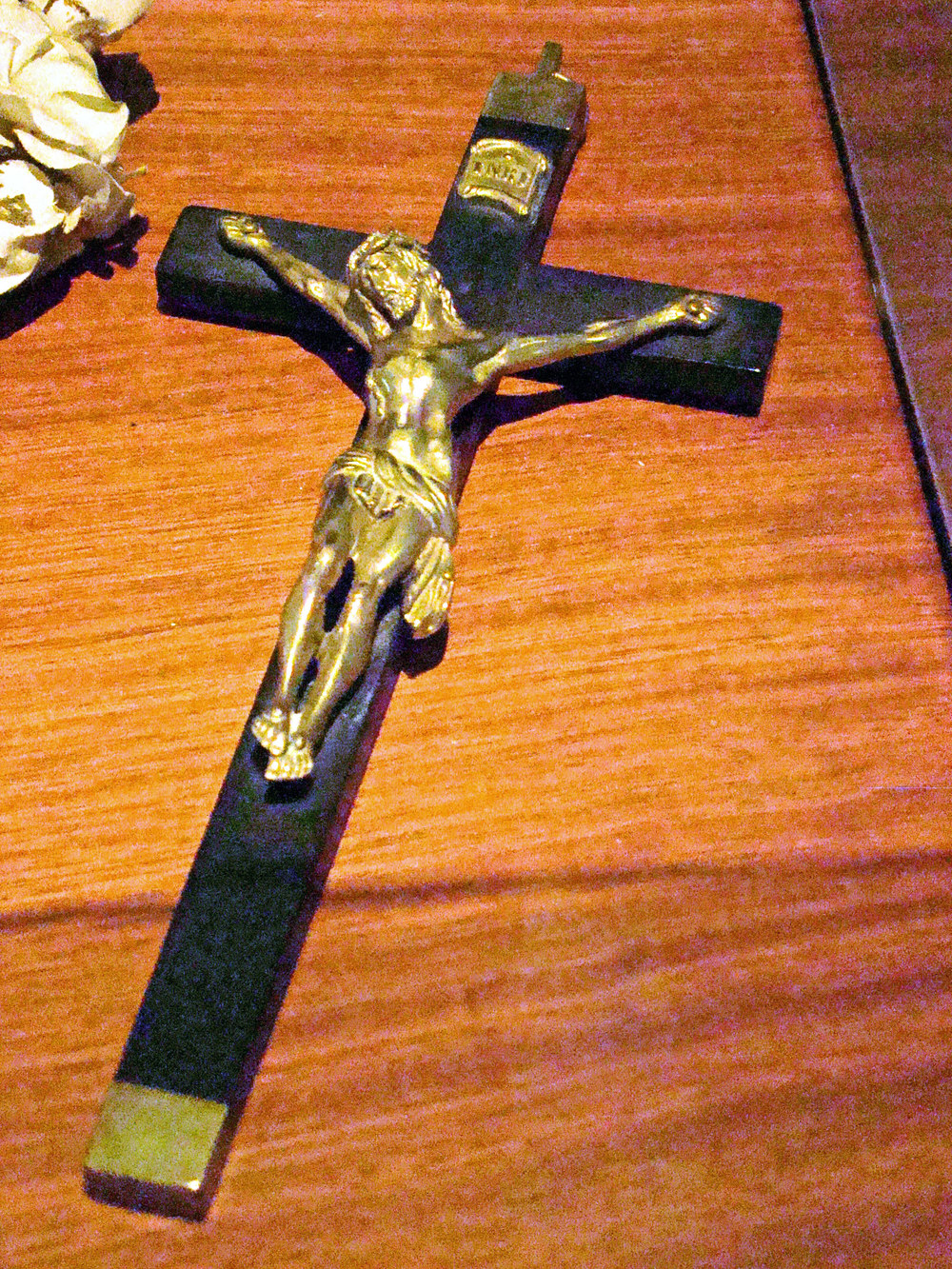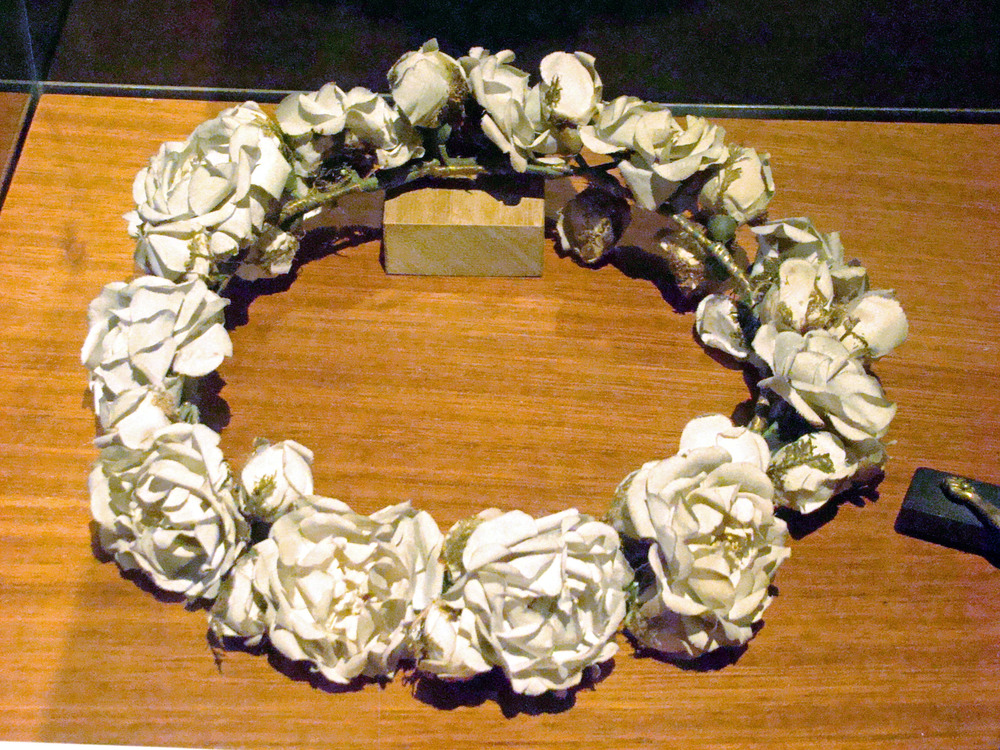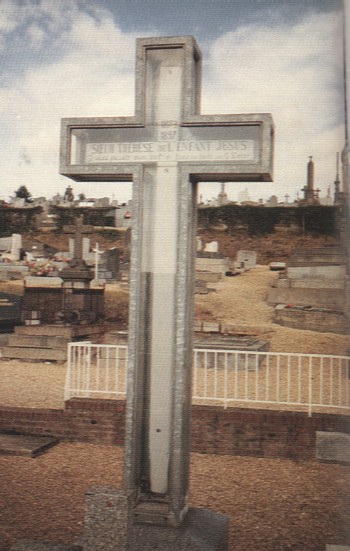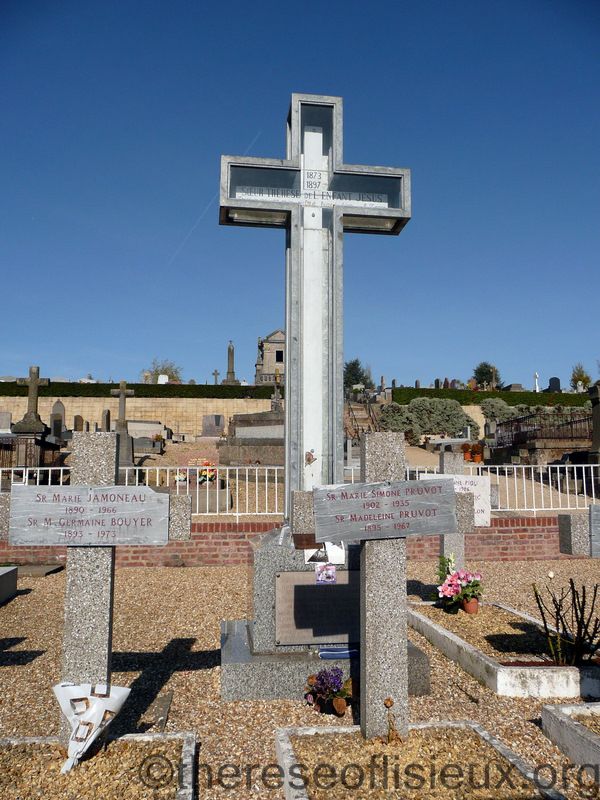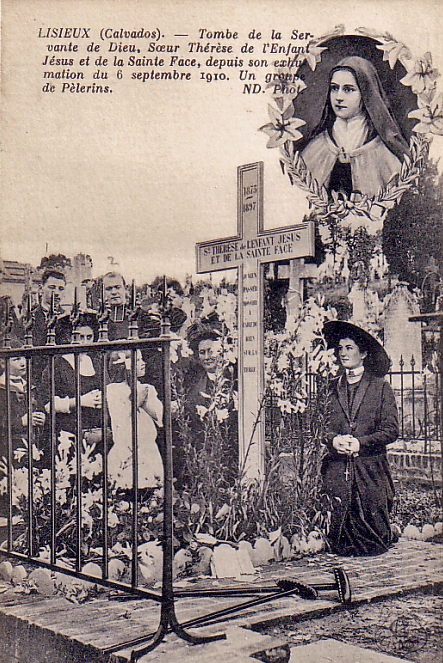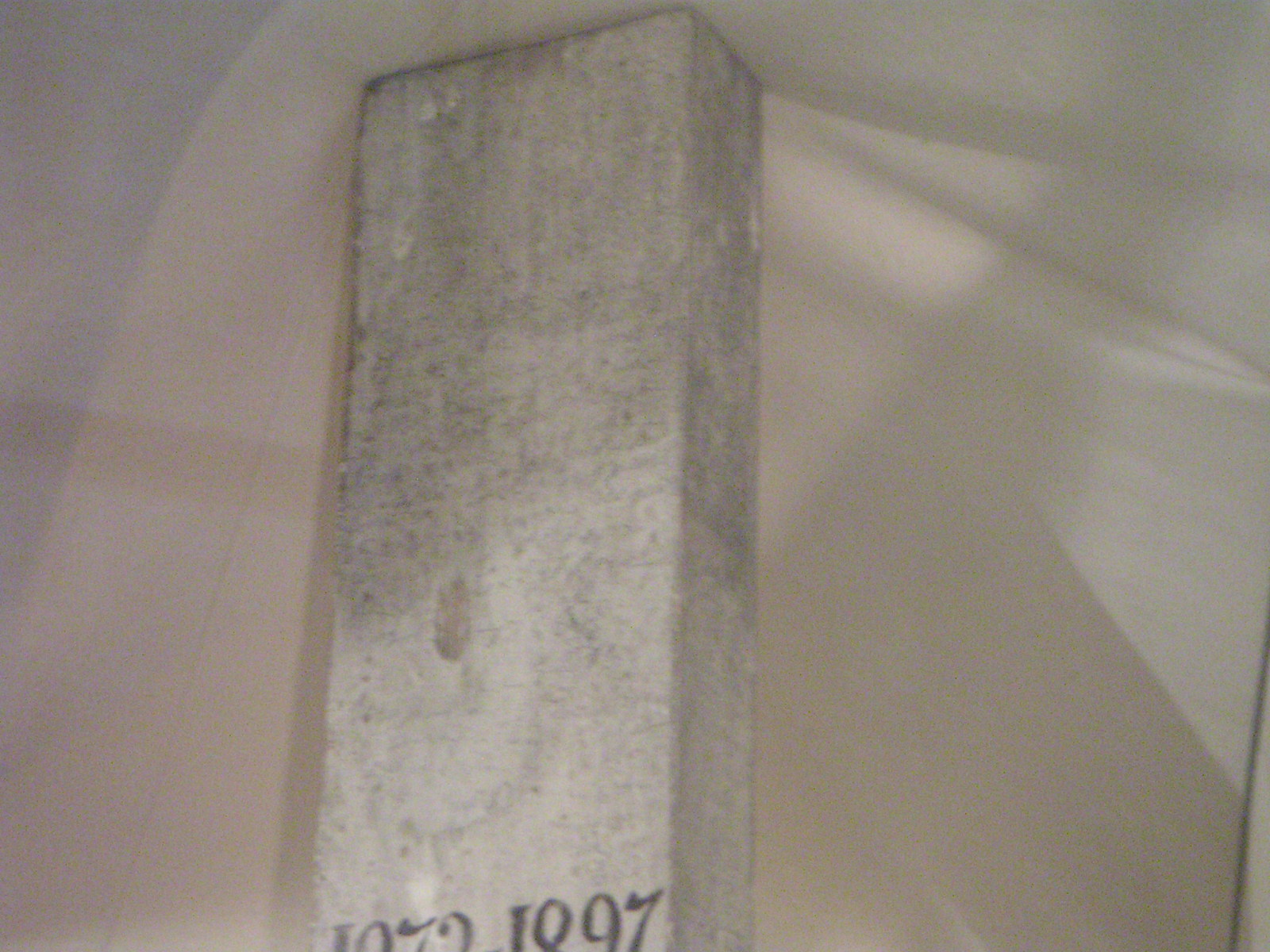Bishop Lemonnier of Bayeux prays with the Archbishop of Paris at Therese's grave.
Though Therese had died less than thirteen years before, the process to inquire into her sanctity was already underway. The tribunal convened by the bishop of the diocese of Bayeux had begun in August 1910 to interview witnesses at Lisieux.
The custom of exhuming the body of a person who might be declared a saint was rooted in the time when the Church considered, among other criteria, whether the body of the candidate had been preserved. Because the Church has found that incorruptibility may be caused by environmental conditions, exhumation is no longer necessary.For more about this question, thanks to the Internet Archive, see the article by Dwight Longenecker.
The night before Therese's exhumation, she appeared to Mother Carmela of the Heart of Jesus, the prioress of the Carmel of Gallipoli in Italy. Mother Carmela was not aware that the body of Therese was to be exhumed in France the next day. She reported that Therese's "countenance was very beautiful and shining, her garments glittered with a light as of transparent silver." Therese said to her "Only my bones will be found." (See Storm of Glory: The Story of St. Therese of Lisieux, by John Beevers. New York: Doubleday, 1955, p. 128). [For an account of the miracles God worked through Therese in 1910 and 1911 to rescue the Carmel of Gallipoli from near bankruptcy, please see "The Miracle of Gallipoli" by Giovanni Ricciardi. This miracle confirmed her little way and was given a special session in the diocesan process].
The exhumation of Sister Therese's body took place in the presence of Bishop Lemonnier, the bishop of Bayeux, and of about a hundred other people. Dr. de Corniere and Dr. La Neele, who looked after Therese in her illness, were present and confirmed that her body had disintegrated in the usual way soon after her death. Therese had said "You will not find me anything but a little skeleton." Her sister Pauline recorded that on August 20, 1897, Therese had said to her, "with a happy and mischievious air: 'I shall soon be in the horrors of the tomb! And you will be there also, little Mother! And when I see you arrive next to me, my humbled bones will leap with gladness!' (See St. Therese of Lisieux: Her Last Conversations. Washington, D.C.: ICS Publications, 1977, p. 156).


